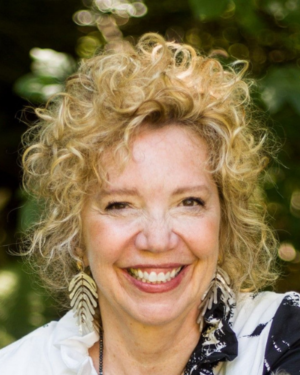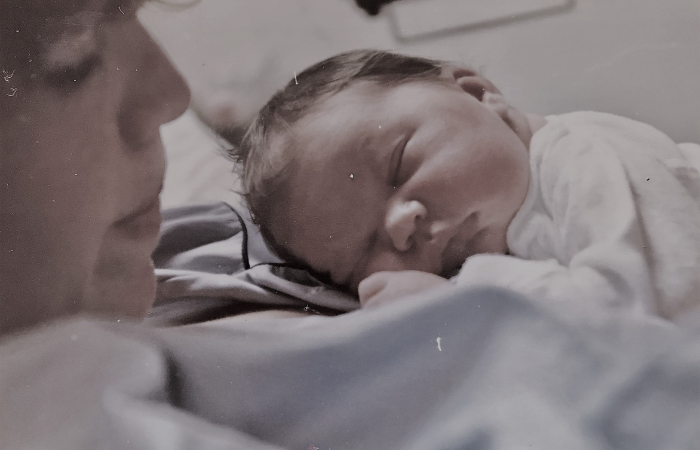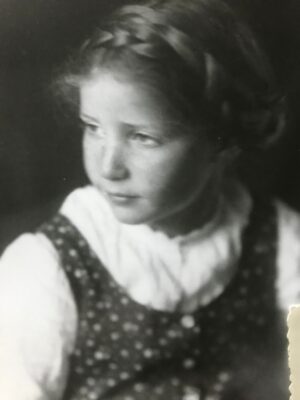Being Jewish
Commentary
Family
The Power and Danger of Secrets

“You are only as sick as your secrets,” I was told during my inpatient stint at McLean psychiatric hospital in Belmont, Mass. I remember feeling relieved because I didn’t have any secrets. This lack of secrets, I reasoned, would help me recover more quickly from my depression and allow me to get home to my newborn daughter.
But what if there are family secrets that you don’t know exist? Can those make you sick? I had been depressed for most of my life, but it wasn’t something I was allowed to talk about. In my family, showing signs of mental weakness was forbidden, and my mother, Doris, had made her opinion of psychiatrists clear by telling me throughout my younger years that “no child of mine shall ever see one of those people.” When I felt miserable, I was told to stop being so sensitive.
In my early 20s, sleeplessness and agoraphobia forced me to drop out of graduate school, where I had been studying biochemistry. I married my first husband, John, whom I had met in college, primarily because I was terrified to live on my own. During our first year of marriage, I knew I couldn’t manage a full-time job. I couldn’t even cook or do laundry without feeling overwhelmed. My depression worsened, and I decided the cure would be to have a baby.
Erica was born on August 27, 1984. She was 10 pounds and the most beautiful thing I’d ever seen. I felt cured—for about a week. But then the panic and depression returned with such force that I didn’t know how to survive. I finally called a psychiatrist and John drove me to the doctor’s office one night in November. When the doctor heard about my suicidal ideation, he reserved a bed for me at McLean.

I will never forget standing at the steel door to the hospital ward, overwhelmed by fear on that cold, damp night. But I couldn’t go back to the bed where I couldn’t sleep, or to the kitchen that I couldn’t clean. Or to the back steps where the night before I had smoked a cigarette for the first time in over a year, hoping it would calm me. Instead, I had brought the burning tip, orange with specks of gray, to my wrist and allowed the ember point to singe my skin. That kind of pain was easier to bear.
The admitting doctor at McLean asked me standard questions, including if there was ever any mental illness in my family.
“No, absolutely not, they are perfect,” I answered. “I am the weak link.”
As I began to feel stronger with the help of medication and therapy, my grandmother, Inga, whom I called Omama, came from Switzerland to visit. We drank tea in the patient dining room, and in stops and starts, she revealed a secret she had intended to take to her grave.
She had had a sister, Rigmor, who suffered from mental illness. The sisters had lived in the family home on the wealthiest street in Frankfurt am Main. They were Jewish but thought of themselves as Germans first. According to my grandmother, Rigmor was bright, beautiful and gentle. She spoke four languages, painted and was a talented pianist. In 1933, she started experiencing psychotic episodes, and the family decided to send her, then 24 years old, to Sonnenstein, a highly regarded German institution renowned for its curative treatments and where my grandmother knew one of the doctors. It was at this facility that Rigmor received the diagnosis of schizophrenia.
It wasn’t long before the same acclaimed healing institution, under Nazi orders, quietly began to murder its patients. A variety of euthanasia methods were used: lethal injection, starvation and the release of carbon monoxide gas into a closed chamber outfitted to look like a shower room. This gassing technique used at Sonnenstein and five other facilities of the so-called Euthanasia Program was considered so efficient that it was later adapted for the killing of Jews and other prisoners in concentration camps.
When Rigmor became ill with an infection sometime in 1937 or 1938, the doctor, my grandmother and her mother decided it would be better to give her a lethal injection and relieve her of her misery.
Meanwhile, Omama and my mother, then 2, fled to Switzerland—and they never spoke of having a mentally ill family member until I went to McLean.

Hearing Rigmor’s story lessened my shame. I was not alone. I also began to understand the power and danger of secrets. Like many children, I was a barometer of the family climate. I felt the unspoken emotions, turned them inward and carried them in the form of depression. My family thought they were protecting me by keeping Rigmor a secret. But their hidden fears of mental illness seeped into the family fabric and caused emotional havoc.
Thankfully, I live in a time where help is more readily available and mental illness is less stigmatized. After years of treatment and confronting my own family history, I made tremendous progress. I was also fortunate to have a courageous grandmother who, by revealing her past, set me free.
Sylvia Bodmer True’s new novel, Where Madness Lies, is based on her family history. She lives in Natick, Mass., and is the head of the science department at a local high school.










 Facebook
Facebook Instagram
Instagram Twitter
Twitter
Leave a Reply